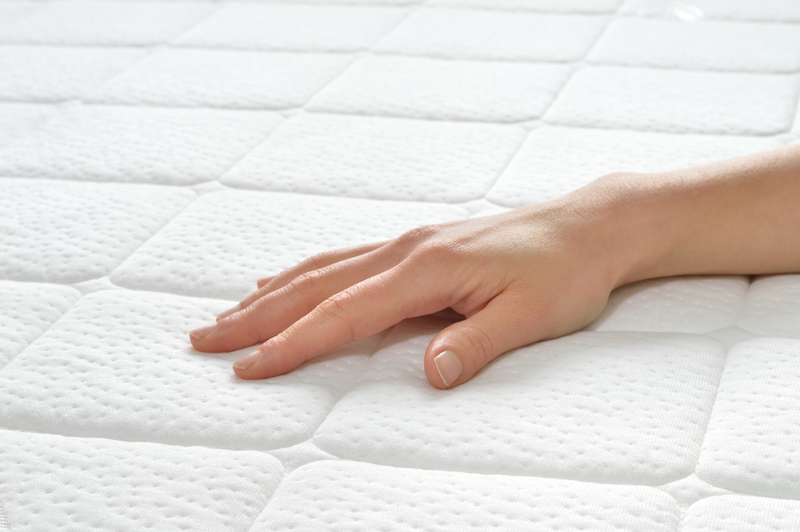End of Tenancy Cleaning: What Every Tenant Should Know
Posted on 18/09/2025
End of Tenancy Cleaning: What Every Tenant Should Know
Moving out can be both an exciting and stressful experience, especially when it comes to ensuring your rental property is left in impeccable condition. A end of tenancy cleaning--sometimes referred to as move-out cleaning or after tenancy cleaning--plays a crucial role in getting your deposit back and leaving a lasting impression on your landlord or letting agent. In this comprehensive guide, you'll discover everything you need to know about end of tenancy cleaning, from its importance to cost breakdowns, checklists, and expert tips that will help you navigate the process effortlessly.

What is End of Tenancy Cleaning?
End of tenancy cleaning is a deep cleaning process that tenants are usually required to carry out before vacating a rented property. Unlike regular cleaning, this is far more thorough, aiming to restore the property to its original, pristine condition. It covers every corner and crevice, tackling areas that often get overlooked during everyday cleaning routines.
Why Is End of Tenancy Cleaning Important?
- Deposit Recovery: A significant portion of withheld deposits arises from insufficient cleaning. Proper end of tenancy cleaning increases your chances of a complete deposit refund.
- Compliance with Agreement: Most tenancy agreements specify the need for professional or 'end of tenancy' standard cleaning before return of keys.
- Creating Positive References: Leaving your rented property spotless improves landlord-tenant relationships and can result in better references for future rentals.
- Prevents Disputes: A well-cleaned property reduces disagreements with landlords and letting agents regarding the property's final condition.
End of Tenancy Cleaning: Tenant vs Professional Services
Should you carry out the cleaning yourself or hire professional cleaners? This is a common dilemma. Both approaches have advantages and considerations, which we'll discuss below.
DIY End of Tenancy Cleaning
- Cost Saving: Doing it yourself can be more budget-friendly if you already have the right supplies and plenty of time.
- Flexibility: You control the schedule and can focus on areas that need extra attention.
However, be aware that DIY cleaning is time-intensive, requires effort, and you may miss out on certain hidden spots that landlords or agents check.
Professional Cleaning Services
- Experience and Tools: Professionals are trained and equipped to handle deep cleans efficiently, following checklists tailored for end of tenancy standards.
- Guaranteed Quality: Many companies offer re-clean guarantees, returning at no cost if your landlord is dissatisfied.
- Documentation: You receive a cleaning certificate or invoice as proof, which most agencies recognize.
- Time-Saving: The job is often completed quickly, freeing you to focus on your move.
What Does End of Tenancy Cleaning Include?
To ensure you don't overlook any critical steps, here's a breakdown of what a typical end of tenancy cleaning should cover. Though requirements vary, the following cleaning checklist will help you tick off every essential task.
General Areas (All Rooms)
- Dust, wipe, and polish all surfaces, shelves, fixtures, and skirting boards
- Clean doors, door frames, and handles
- Vacuum all carpets, rugs, and floors
- Mop hard floors and tiles
- Remove cobwebs from ceilings, corners, and light fixtures
- Clean mirrors, glass surfaces, and interior windows
- Empty bins and dispose of any rubbish
- Wipe light switches and sockets
Kitchen
- Deep clean of all appliances: oven, hob, extractor fan, fridge/freezer, microwave, dishwasher, kettle, toaster
- Degrease the oven and hobs
- Clean inside cupboards, drawers, and units
- Descale sinks, taps, and drainers
- Wipe down all surfaces, splash-backs, and tiles
- Clear and clean out food residue or crumbs
Bathroom
- Descale and disinfect toilets, bathtubs, showers, and sinks
- Clean and polish mirrors, glass screens, and tiles
- Wipe cabinets, shelving, radiators, and towel rails
- Sanitise floors, walls, and grout
- Remove mould, soap scum, and limescale build-up
Bedrooms & Living Areas
- Dust wardrobes, chests, and bedside tables inside and out
- Vacuum under beds and behind furniture
- Wipe down lampshades, light fixtures, and picture frames
- Clean upholstery and cushions as needed
Additional Areas
- Cleaning balconies, patios, or garden areas (if applicable)
- Washing windows inside and out (where safe and possible)
- Cleaning walls if required (remove marks, touch-up paint)
Top Tips for a Successful End of Tenancy Clean
- Use a Checklist: Having a comprehensive list ensures nothing is forgotten. Most letting agents provide a move-out cleaning checklist--use it as your guiding document.
- Start Early: Begin at least a week before your move-out date, dedicating a few hours each day to deep cleaning.
- Get the Right Supplies: Gather high-quality cleaning products, microfiber cloths, descalers, degreasers, vacuum, and mop in advance to prevent interruptions.
- Don't Ignore Appliances: Ovens, refrigerators, and washing machines are often thoroughly checked. Make sure to clean behind and inside them.
- Repair Minor Damage: Fix nail holes, scuffs, and replace broken handles or bulbs before your final inspection to avoid deductions.
- Photograph Everything: Take before and after photos as evidence of the property's condition.
- Inspect with Your Landlord: Arrange a walkthrough so any issues can be addressed immediately.
Common Pitfalls to Avoid
Overlooking small details can be costly. Make sure you avoid these frequent mistakes:
- Skipping hidden areas: Under furniture, behind radiators, tops of cupboards.
- Not defrosting and cleaning freezers: Ensure they're switched off and dry before leaving.
- Ignoring lime scale and mould build-up: Pay special attention to bathroom fittings and under sink areas.
- Leaving rubbish or personal belongings: Remove all garbage and ensure nothing is left behind.
- Forgetting outdoor spaces: Gardens, balconies, or parking areas must be kept tidy.
How Much Does End of Tenancy Cleaning Cost?
The cost of end of tenancy cleaning varies based on:
- Property size (studio, flat, house, number of bedrooms/bathrooms)
- Level of dirt/neglect
- Additional services (carpet, upholstery, oven, window cleaning)
- Location (urban areas may cost more than rural regions)
On average, you can expect to pay:
- Studio/1 Bedroom Flat: ?90 - ?140
- 2 Bedroom Apartment: ?120 - ?200
- 3 Bedroom House: ?150 - ?300
- Larger properties or additional services will require a custom quote.
*It's highly recommended to request a fixed-price quote from multiple companies, and ensure all services and guarantees are outlined in writing.
What Do Landlords and Letting Agents Look For?
Landlords and letting agents are meticulous during final inspections. They commonly use an inventory or condition report made at the start of your tenancy as a reference. To maximize your chances of passing the cleaning inspection:
- Compare the property's current state with your move-in inventory photos.
- Ensure all rooms and features (appliances, fittings, furnishings) meet the agreed standards.
- Keep proof of professional cleaning (receipt, report, or certificate).
- Be present during the inspection for immediate feedback or guidance.
When Should I Book My End of Tenancy Clean?
Plan to book your cleaning for after the property is empty but before your official move-out inspection. This allows cleaners unrestricted access and ensures no areas are missed behind furniture or boxes. If you're hiring professionals, reserve your slot at least 2-3 weeks in advance, especially during peak moving periods.

Frequently Asked Questions (FAQs)
Do I Have to Use a Professional Company?
No, unless your tenancy agreement specifically requires it. However, professional cleaning can save time, ensure higher standards, and provide documentation in case of disputes.
Can the Landlord Deduct from My Deposit for Cleaning?
Yes, if the property isn't cleaned to the required standard, the landlord can arrange professional cleaning and deduct costs from your deposit. Always aim to surpass minimum expectations to avoid disputes.
What If I Disagree With the Landlord's Assessment?
Dispute resolution services such as the Tenancy Deposit Scheme can mediate between tenants and landlords if disagreements arise regarding cleaning or deductions.
What Cleaning Products Should I Use?
Choose eco-friendly and non-abrasive cleaning agents where possible. Use descalers for bathrooms, degreasers for kitchens, and appropriate polishes for wood surfaces. Avoid harsh chemicals that can damage fixtures.
Can I Perform End of Tenancy Cleaning in Stages?
It's often most effective to do a thorough, top-to-bottom clean in one go to avoid dust or dirt settling on already cleaned surfaces. If your schedule is tight, clean rooms that aren't used daily first and do final touch-ups on moving day.
Conclusion: Give Yourself the Best Chance at Full Deposit Return
End of tenancy cleaning is more than just a final sweep; it's your ticket to a smooth transition and a full deposit refund. Whether you choose the DIY route or hire experts, thoroughness and attention to detail are key. Equip yourself with a handy checklist, document the work, and communicate openly with your landlord to eliminate surprise issues. Remember, leaving your rental in stellar condition not only protects your finances but also upholds your reputation as a reliable tenant wherever you go next.
Looking for more moving tips or need a trusted end of tenancy cleaning service? Stay tuned to our blog for expert guidance and recommendations tailored to make your move as stress-free as possible!




